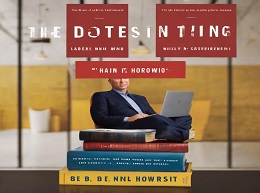Good to Great

In the realm of business literature, few books have left as profound an impact as "Good to Great" by Jim Collins. With meticulous research and compelling insights, Collins dissects the characteristics and strategies that distinguish good companies from truly great ones. Join us as we delve into the transformative lessons of "Good to Great," enriched with captivating examples and actionable advice for achieving excellence in business.
The Pursuit of Greatness
From Good to Great: Setting the Stage
Collins introduces the central premise of "Good to Great"—the journey from good to great is not about radical transformation but rather about disciplined and sustained effort over time. He presents the findings of his extensive research, which identified companies that made the leap from mediocrity to sustained greatness.
The Hedgehog Concept: Focused Excellence
Collins introduces the concept of the hedgehog principle, inspired by the fable of the hedgehog and the fox. Great companies, he argues, are like hedgehogs—they focus on one central idea or mission and excel at it relentlessly, while good companies scatter their efforts like foxes, chasing multiple objectives without achieving mastery in any.
The Characteristics of Greatness
Level 5 Leadership: Humility and Resolve
Collins identifies Level 5 leadership as a defining trait of great companies. Level 5 leaders combine humility with fierce resolve, prioritizing the success of the organization over personal glory. Through their unwavering dedication and commitment, they inspire greatness in others.
The Stockdale Paradox: Confronting Reality with Optimism
Drawing from the experiences of Admiral James Stockdale, Collins introduces the concept of the Stockdale Paradox. Great companies confront the brutal realities of their situation with unwavering optimism, acknowledging challenges while maintaining faith in their ability to overcome them.
Strategies for Sustainable Success
The Flywheel Effect: Building Momentum
Collins introduces the concept of the flywheel effect—a metaphor for the cumulative impact of sustained effort over time. Great companies focus on building momentum through consistent actions and incremental improvements, eventually reaching a tipping point where success becomes self-perpetuating.
Disciplined People, Disciplined Thought, Disciplined Action
Great companies exhibit disciplined behavior across all aspects of their operations. They prioritize hiring the right people, engaging in rigorous analysis and decision-making, and executing with precision and consistency.
Examples of Greatness in Action
Walmart: The Power of Discipline
Collins examines Walmart as a prime example of a company that achieved greatness through disciplined execution. By focusing on operational excellence, cost control, and a relentless commitment to serving customers, Walmart became a retail giant and a symbol of corporate success.
Johnson & Johnson: Enduring Values
Johnson & Johnson exemplifies the power of enduring values and ethical leadership. Despite facing challenges and setbacks, the company maintained its commitment to its Credo—a guiding set of values that prioritizes the well-being of customers, employees, and communities.
Navigating Challenges and Adversity
The Stockdale Paradox in Practice
Collins discusses how great companies apply the principles of the Stockdale Paradox in times of crisis. Rather than succumbing to despair or denial, they confront the brutal realities of their situation while maintaining faith in their ability to emerge stronger on the other side.
Embracing Change and Adaptation
Great companies are not immune to change—they embrace it as an opportunity for growth and adaptation. By remaining agile and responsive to evolving market dynamics, they position themselves to thrive in an ever-changing business landscape.
Implementing "Good to Great" Principles
Define Your Hedgehog Concept
Identify your organization's core mission or purpose—the central idea that drives everything you do. Focus relentlessly on excelling in this area and avoid spreading your efforts too thin.
Cultivate Level 5 Leadership
Develop leaders who embody the qualities of Level 5 leadership—humility, resolve, and a commitment to the greater good. Foster a culture that values leadership as a service to others rather than a pursuit of personal glory.
Build Momentum with the Flywheel Effect
Identify key initiatives that can contribute to building momentum and achieving your long-term goals. Focus on consistent execution and incremental progress, trusting that each small step brings you closer to success.
Conclusion: Striving for Excellence
"Good to Great" by Jim Collins is a timeless guide to achieving excellence in business. Through insightful research and compelling examples, Collins uncovers the principles that differentiate good companies from truly great ones. By embracing disciplined effort, enduring values, and unwavering optimism, organizations can embark on their own journey from good to great.
As we strive for excellence in our own endeavors, let "Good to Great" serve as a roadmap—a blueprint for achieving sustained success and making a lasting impact in the world of business.
Ready to embark on your journey from good to great? Dive into 'Good to Great' and discover the secrets to sustainable success in business.









